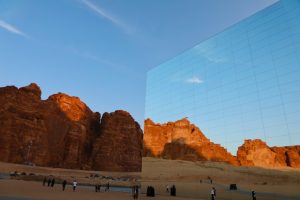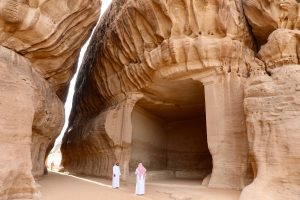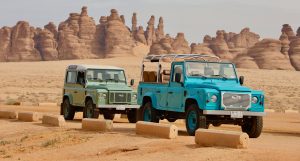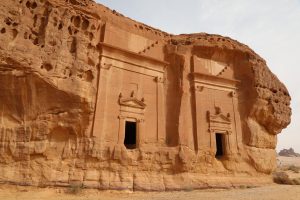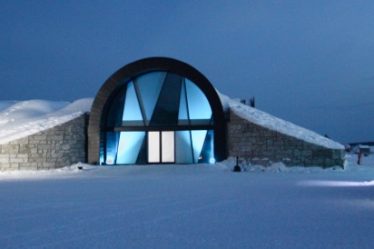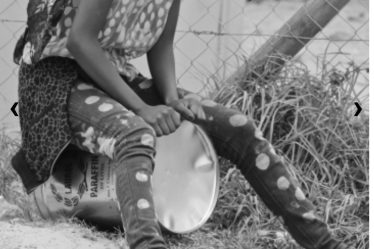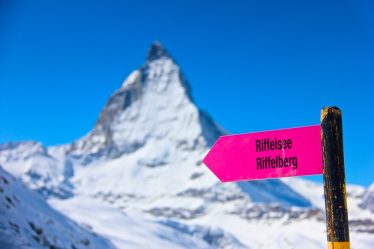
I have to admit I never thought I would ever travel to Saudi Arabia. A country previously closed to those without business or religious reasons to visit, the country opened to general tourism in 2019. Crown Prince Mohammed bin Salman Al Saud and his government announced Vision 2030 in 2016. The Vision is described as a ‘transformative and ambitious blueprint to unlock the potential of its people and create a diversified, innovative, and world leading nation.’
With the hope of attracting more tourists to explore the country’s rich cultural heritage, an era of openness has begun. Encouraged by this new policy, my partner and I decided to visit in January 2024. As the explorer and writer Levison Wood said of his recent visit…
There are very few places left that you can genuinely explore and be one of the pioneers. Saudi Arabia is one of those places.
We couldn’t have said it better ourselves. There is something very exciting about knowing you are among the first travellers to see a country.
We arrive in Alula by car with our driver Mohammed. He is very friendly and introduces himself by announcing that, ‘everyone is called Mohammed here. To save confusion why don’t you just call me Bob.” So Mohammed Bob he became from that moment forward.
Mohammed Bob’s driving was fast. Way too fast for me. On the long drive from Medina there were sometimes three cars driving abreast on a two lane road. When the speedometer hit 190kms/hour I had to speak up and ask him to slow down, He did. To 130. ‘That’s not fast for Saudi Arabia,’ he tells me. ‘Well, it’s fast for Australia,’ I reply. We have a speed limit of 100 or 110kms/hour.’ He is aghast. ‘How do you ever get anywhere?’
We arrive alive at Malaya, the largest mirrored building in the world which acts as a concert hall, event space and community centre, and which houses a Michelin starred restaurant. It’s also a work of art, a kind of architectural sculpture reflecting the changing colours of desert light. It blends seamlessly with the landscape and seems to enhance rather than disturb the surroundings. We arrive at sunset when the colours are particularly enchanting and it is hard not to be impressed.
Our nest stop is Our Habitas, a resort set amongst the ancient desert canyons and sandstone cliffs. We are shown our villa and the E-bikes we will need to get around. We dine at the resort restaurant which is next to the most impressively located swimming pool I have probably ever seen. The scenery is breathtakingly beautiful, particularly as the light fades and the sunset colours are reflected on to the sandstone cliffs.
The next day, after seeing the sun rise over early morning coffee on our verandah, we are collected by Mohammed Bob and taken to the ancient sight of Hegra. Also known as Mada’ in Salih, the archaeological site is the second largest city of the Nabataean Kingdom after Petra, and, until now, has been virtually undisturbed for 2000 years. I’ve been to Petra which lies a few hundred kilometres north in Jordan, and so I think I know what to expect. But this site is very different despite the rock hewn constructions bearing some resemblance to each other. Most obviously there are no crowds of people. We opt for getting around in a vintage Land Rover and there is only one other vehicle on our tour. During the entire morning we meet maybe ten other visitors. There is no one harassing you or trying to sell you anything, and you can get right up close to the tombs and structures. My overriding thought is ‘how long will this last?’ Then, ‘how lucky we are to see this amazing location before the crowds inevitably arrive.’
The photo above is of one of the main attractions, the Diwan; a meeting room or dining area carved into the rocks, historically believed to have been a place for royal banquets and political meetings. We have a Saudi female guide and Bruce is asked to keep a respectable distance from her while she speaks to us. It is sometimes difficult to hear what she is saying, her entire face covered as it is with the hijab and niqab. She gives us great insight into this open air museum and tells us that the Nabataens were desert-dwelling nomads who became wealthy merchants, controlling the incense and spice trade routes through Arabia and Jordan to the Mediterranean, Syria, Egypt and Mesopotamia. They prospered from the 4th Century B.C. Until the 1st Century A.D. Most of the remaining structures we see are some of the 111 carefully carved tombs which are in excellent condition and which were likely the final resting place of high ranking officers and their families. It is hard to believe that 7000 years of successive civilisations settled in this valley.
Back at the small visitor centre I am fascinated by the reconstructed model of Hinat, a Nabataean woman whose remains were discovered inside a 2000 year old tomb in 2015. Academics, archaeologists, forensic scientists and specialist model makers all collaborated to reconstruct a life-like image of her face. It is history coming to life.
By 2035, Alula is hoping to attract two million tourists annually. One can see the infrastructure developing to accommodate such numbers; new hotels being built, a railway, better roads, and the airport has undergone a large scale renovation.
It seems that along with the push for visitors from the four corners of the globe, the spirit of the Nabataean people and their stories will become known to the world, and, like Hinat, will finally find eternal life.
WHERE? Alula, Saudi Arabia
https://www.experiencealula.com/en
WHAT? Hegra, an ancient Nabataean Kingdom and Saudi Arabia’s first UNESCO World Heritage Site
WHERE WE STAYED Our Habitas Resort
https://www.ourhabitas.com/alula/
HOW TO GET THERE We drove with a private driver from the city of Medinah which took approximately 4 hours. The Prince Abdulmohsin Bin Abdulaziz airport is in ALULA and you can fly internationally via Dubai and Doha
https://www.experiencealula.com/en/plan-your-trip/getting-to-and-around-alula
